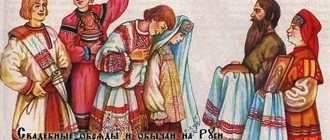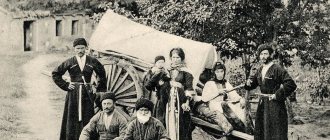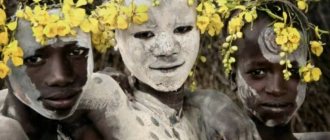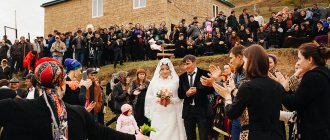Chechens are the oldest people of the Caucasus. They appeared on the territory of the North Caucasus in the 13th century as a result of the division of several ancient cities and are the largest ethnic group living in this territory. This people made their way along the Main Caucasus Range through the Argun Gorge and eventually settled in the mountainous part of the Republic of Chechnya. This people has its own centuries-old traditions and original ancient culture. In addition to the name Chechens, the people are called Chechens, Nakhche and Nokhchi.
Story
Several settlements took place in the history of this people. About 5,000 Chechen families moved to the territory of the Ottoman Empire after the Caucasian War in 1865. This movement is called Muhajirism. Today, the bulk of the Chechen diasporas in Turkey, Jordan and Syria are represented by the descendants of those settlers.
In 1944, half a million Chechens were deported to Central Asia; in 1957 they were allowed to return to their former homes, but some Chechens remained in Kyrgyzstan and Kazakhstan.
After the two Chechen wars, many Chechens left their homeland and went to Arab countries, Turkey and Western European countries, regions of the Russian Federation and countries of the former USSR, especially Georgia.
Origin of the Chechens
There are several versions of the origin of the name of the Chechen nation:
- Most scientists are inclined to believe that the people began to be called this way around the 13th century, after the village of Bolshoi Chechen. Later, they began to call this not only the residents of this locality, but also all neighboring villages of a similar type.
- According to another opinion, the name “Chechens” appeared thanks to the Kabardians, who called this people “Shashan”. And, supposedly, representatives of Russia simply slightly changed this name, making it more convenient and harmonious for our language, and over time it took root and this people began to be called Chechens not only in Russia, but also in other countries.
- There is a third version - according to it, other Caucasian peoples initially called the inhabitants of modern Chechnya Chechens.
By the way, the word “Vainakh” itself translated from Nakh into Russian sounds like “our people” or “our people.”
If we talk about the origin of the nation itself, it is generally accepted that the Chechens have never been a nomadic people and their history is closely connected with the Caucasian lands. True, some scientists claim that in ancient times, representatives of this nation occupied larger territories in the northeastern Caucasus, and only then migrated en masse to the north of the Caucasus. The very fact of such a relocation of people does not raise any particular doubts, but the motives for the move are not known to scientists.
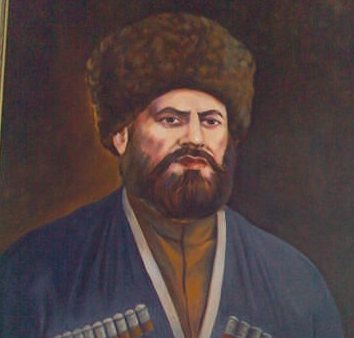
According to one version, which is partly confirmed by Georgian sources, the Chechens at a certain moment simply decided to occupy the North Caucasus space, where no one lived at that time. Moreover, there is an opinion that the name Caucasus itself is also of Vainakh origin. Allegedly, in ancient times this was the name of the Chechen ruler, and the territory received its name from his name “Caucasus”.
Having settled in the North Caucasus, the Chechens led a sedentary lifestyle and did not leave their native places unless absolutely necessary. They lived in this territory for hundreds of years (from about the 13th century).
Even when in 1944 almost the entire indigenous population was deported due to the unfair accusation of supporting the Nazis, the Chechens did not remain on “foreign” land and returned to their homeland.
Language
The Chechen language belongs to the Nakh branch of the Nakh-Dagestan language family, which is included in the hypothetical North Caucasian superfamily. It is distributed mainly in the territory of the Chechen Republic, in Ingushetia, Georgia, some regions of Dagestan: Khasavyurt, Kazbekovsky, Novolaksky, Babayurt, Kizilyurt and other regions of Russia. Partial distribution of the language occurs in Turkey, Syria and Jordan. Before the 1994 war, the number of Chechen speakers was 1 million.
Since the Nakh group of languages includes Ingush, Chechen and Batsbi languages, Ignush and Chechens understand each other without an interpreter. These two peoples are united by the concept “Vainakh”, which translates as “our people”. But these peoples do not understand Batsbi, since it was heavily influenced by the Georgian language due to the residence of the Batsbi in the gorges of Georgia.
In the Chechen language there are a number of dialects and the following dialects:
- Shatoisky
- Cheberloevsky
- planar
- Akkinsky (Aukhovsky)
- Sharoi
- Itum-Kalinsky
- Melkhinsky
- Kistinsky
- Galanchozhsky
Residents of the vicinity of Grozny speak the Chechen language using the flat dialect; literature, including fiction, newspapers, magazines, scientific research and textbooks, is written in it. Works of classical world literature have been translated into Chechen. Chechen words are difficult, but they sound very beautiful.
Written language until 1925 was based on Arabic. Then, until 1938, it developed on the basis of the Latin alphabet, and from this year to the present, the Chechen written language is based on the Cyrillic alphabet. There are many borrowings in the Chechen language, up to 700 words from Turkic languages and up to 500 from Georgian. There are many borrowings from Russian, Arabic, Ossetian, Persian and Dagestan. Gradually, foreign words appeared in the Chechen language, for example: rally, export, parliament, kitchen, dance, mouthpiece, avant-garde, taxi and broth.
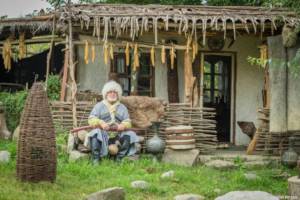
What a Chechen girl/wife should know
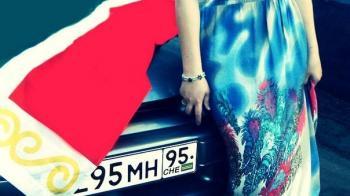
I read somewhere here a topic about what a girl should know if she wants to marry a Chechen. I want to write my version, because I am one!) Let's start with the fact that a woman is held in high esteem and respect among the Chechens, she has special social status. The woman and health are the mistress of the fire/home, the man is only the master of the house. Women are greeted standing, especially the elderly. For a Chechen, the greatest shame is not to honor his mother and her relatives. In Chechnya, a woman is not allowed to go ahead, she must walk behind, entering only after the man. The tradition of letting a woman go first appeared in the days of the food people, the man was the prey, so the weight of his life was heavier, but if there was a predator in the cave, he would attack the woman first. Among the Chechens, on the contrary, the man must be the first to take on the danger. I’ll tell you about how a woman should dress, no miniskirts in Chechnya! no tight-fitting trousers, low necklines, transparent blouses, T-shirts. Shoulders should be covered, legs too, at least to the knees. When you come to your husband’s family, you must respect his parents and not contradict them. Now you are the one cooking in the family, his mother can help you, but is not obliged. Chechens are very clean; the house must always be in order. You should not show affection to your husband in front of his relatives, no hugs, no hugs, no eye contact, behave modestly. It is advisable for you to learn the language, because by doing this you show that you respect its traditions. his mentality. But this is also a plus for you, you can often find yourself in such situations when everyone speaks Chechen, and you don’t understand anything, at first it seemed to me that everyone was discussing me during conversations... and besides, for me personally It would be humiliating not to know the language of your children, but it depends. Accept that your children will be Muslims. Chechens rejoice more at the birth of a son than a daughter, because the son is the continuator of the family. Chechens are also very hospitable people; don’t be surprised if there are always guests in your home. If you go to visit, then you should immediately offer your help to the hostess, but do not impose yourself; if they say no, then sit quietly. Also be prepared for attacks from the female part of your husband’s relatives, they can show you their dissatisfaction openly , or they can quietly plot against you. Chechen women do not like to marry Russians, and this is not because they are all so evil and nasty, but because the wars that took place in Chechnya claimed many lives. At the moment, I think there are 20% more women in Chechnya. Well, it turns out that they don’t have enough guys anyway, and we’re still here, stealing someone’s potential groom!) In general, I’m satisfied with everything. I’m a housewife, I work from home, my husband won’t let me go to normal work, and I don’t want to, I’ve done all the housework and do whatever you want for your own pleasure.) I look at the lives of my sisters and understand that I’m very lucky. All my sisters have fights and scandals at home, sometimes my husband came drunk, sometimes he didn’t come at all, sometimes he doesn’t give me money, or something else!) But I have the complete opposite, we don’t swear, we don’t make scandals, my husband doesn’t drink, doesn’t smoke He never raised his hand to me. Every day I only hear that I am the best, the most beautiful, that I am his gift from above. In general, I live like in a fairy tale!) The main thing is to understand their entire mentality, to accept their adats... I don’t know about you, but I’m ready for anything for the sake of my loved one, especially in this case, I don’t do anything to the detriment of myself.
Names
Chechen names include three components:
- Names borrowed from other languages, mainly through the Russian language.
- Originally Chechen names.
- Names borrowed from Arabic and Persian languages.
A large number of old names are derived from the names of birds and animals. For example, Borz is a wolf, Lecha is a falcon. There are names containing the structure of the verb form, names in the form of independent participles, formed from adjectives and qualitative adjectives. For example, Dika is translated as “good”. There are also compound names in the Chechen language, which are made up of two words: soltan and bek. Mostly female names are borrowed from the Russian language: Raisa, Larisa, Louise, Rose.
When pronouncing and writing names, it is important to remember the dialect and its differences, since a name pronounced differently can have different meanings, for example, Abuyazid and Abuyazit, Yusup and Yusap. In Chechen names, the stress always falls on the first syllable.

Nashchelovechek.ru
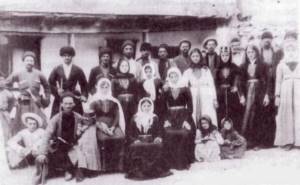
In the Chechen Republic, the use of progressive folk traditions and customs occupies a special place in family education. This circumstance determines the strategic line in the development of spiritual and moral education in the family.
Priority in the spiritual and moral education of the younger generation should belong to the family as an educational institution for the implementation of the development of the inclinations and abilities of the individual. Normal moral relations and an atmosphere of understanding in the family determine the humanistic orientation of the education of the individual.
Raising children in a Chechen family
Hence the interaction within the system: individual – family – society. The primary thing is the person, the family; secondary – society and any of its institutions. The family is not the helper of society, but society should help in every possible way to support the family.
Spiritual and moral education in a modern Chechen family occurs according to the principle of maximum adaptation in real life. Its essence lies in the fact that the child, as a family member interacting with the social and natural environment, finds, with the help of adults, adequate ways and means of survival, and takes all possible participation in all the affairs of the family community. In the process of this activity, the socialization of his personality occurs. No special “greenhouse” conditions are prepared for raising children; they learn and acquire everything they need in life through activity. In the process of everyday participation in work, the child develops such necessary qualities as independence and a creative approach to solving emerging problems.
In modern conditions, Chechen family upbringing has to some extent retained the features of a historically distant time, preserving traditions and values coming from the depths of centuries.
The specificity of family education of Chechen folk pedagogy has norms and moral values that form the ethnic basis of people's lives. It is associated with the ability to adhere to firm rules of behavior and not deviate from them.
The Chechen family has a number of significant factors that contribute to the formation of strong moral and work qualities in children, which represent the foundation in the formation of a spiritual and moral personality.
Observation of the state of a certain part in modern Chechen families leads to the conclusion that many troubles, lack of spirituality, and immorality in them are explained by the loss of national family traditions, moral and labor values, and the weakening of family and simply human ties.
All this speaks to the deformation of social and moral guidelines. The experience of many generations has proven that the socio-pedagogical model of a real Chechen involves comprehensive physical, labor, moral, and aesthetic education. At the center of this process is the upbringing of a family man, a successor to the family, a future father, a future mother.
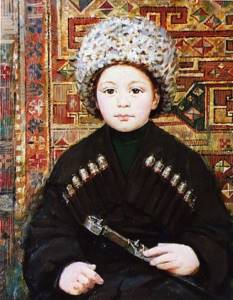
The specificity of Chechen folk pedagogy is humane methods of pedagogical influence, namely: to promote the manifestation of love and conscience in a child with kindness and affection, the development of humanity, virtue through conviction and personal example. The system of means and methods of education excludes suppression, corporal punishment, which humiliates the dignity of the child’s personality. Even a rude shout in the event of a child’s disobedience is condemned by public opinion and is perceived as an insult to both the one who shouts and the one being shouted at.
Men attach special meaning to this custom: “To beat a smaller person means to humiliate.” “A beaten and humiliated person will not grow up proud or brave,” that is, they know what harm physical punishment can bring, they understand what embitters children and corrupts parents. They note that cruelty and blasphemy not only embitter people, but also destroy them. Folk pedagogy also limited women in the use of physical punishment, as this leads to a change in the psychological balance of the child and a violation of such traditions as respect for the mother and love for loved ones. In addition, boys unconsciously develop an aggressive attitude towards an adult woman in general.
The Chechens, following the custom of “not raising hands against each other,” cultivated such valuable qualities as pride, love of freedom, humanity, dignity, modesty, mercy, and respect for elders.
The spiritual and moral nature of family education is clearly manifested in such a Chechen tradition as hospitality - a model of respect for people. The Chechens have always followed this wonderful custom of “hyoshalla”. For a Chechen, a guest is a sacred person; protecting his life, honor, and property is the responsibility of the owner. In a Chechen family, hospitality is considered an integral part of humanity, and whoever does not respect a guest does not enjoy the respect of others. This unwritten, but strictly observed law prescribes to be lenient even towards the enemy if he came to your house and became your guest.
Chechens teach their children this sacred law, mandatory for all people, from childhood. The pedagogical value of this tradition lies not only in the fact that skills and abilities to receive guests are transmitted visually through direct observation, but also “in the fact that it teaches children to devote their strength to creating good for another person.” This custom serves as a factor in nurturing a culture of interpersonal communication and traits of altruism.
It was revealed that the ratio of international and national-specific in the functioning of family and everyday customs and traditions varies depending on the type of family. In this regard, we will conditionally distinguish three types of families: traditional, intermediate and assimilated families. It should be noted that the Chechen family is not only mother, father, and children. Family also includes grandparents, aunts, uncles who live with them or separately from them, but very close. And not only family relationships, but also ethical standards of behavior and communication are mandatory for a Chechen family; it (the family) is built on the principles of respect and honor for elders. Repeating, it should be noted that the main, essential feature of the relations existing among Chechens is a respectful attitude towards parents, and elders in general. Chechens not only have a son or daughter, but also all other family members, including grandchildren, take care of the elderly. As we noted, children call their grandfather “wokha dada” or “dada”, their grandmother “nana” or “yokkha nana”, their father’s sisters and brothers “deci”, “your”, etc.
It seems to us that the ethnopedagogical space of the Chechen family is the educational field of the individual, which is based on the traditions and customs of the people, embodying the mentality inherent in Chechens from time immemorial. It determines the future fate of a person, all his actions and deeds. The potential inherent in the family from childhood will allow the child, a future adult member of society, to freely navigate not only his own ethnic environment, but also any other.
© Nokhchalla.com , based on materials from A.Kh. Sarakaeva
Similar articles:
- General preventive measures
- The role of books in raising a child
- Rosie Huntington-Whiteley said boys should be raised to be feminists
- Parents' divorce - how to tell children
- Modern therapy for a patient with tuberculosis
- Does the younger generation need spirituality or is it an atavism?
Food
Previously, the basis of the diet of the Chechen people was mainly corn porridge, shish kebab, wheat stew and homemade bread. The cuisine of this people is one of the simplest and most ancient. The main products for cooking remain lamb and poultry; the main components of many dishes are hot seasonings, garlic, onions, thyme, and pepper. An important component of dishes is greens. Chechen dishes are very satisfying, nutritious and healthy. A lot of food is prepared from cheese, wild garlic, cottage cheese, corn, pumpkin and dried meat. Chechens love meat broths, beef, boiled meat, and do not eat pork at all.
The meat is served with dumplings made from corn or wheat flour and garlic seasoning. One of the main positions in Chechen cuisine is occupied by flour products with various fillings from potatoes, cottage cheese, pumpkin, nettles and wild garlic. Chechens bake several types of bread:
- barley
- wheat
- corn
Siskal cakes are baked from corn flour, which were previously carried along with dried meat and taken on the road. Such food always satisfied hunger well and nourished the body.

National characteristics
The Chechen language belongs to the Nakh-Dagestan branch and has more than nine dialects that are used in oral and written speech. But the main dialect is considered to be Planar, which in the 20th century formed the basis of the literary dialect of this people.
As for religious views, the overwhelming majority of Chechens profess Islam.
Chechens also attach great importance to observing the national code of honor “Konakhalla”. These ethical rules of behavior were developed in ancient times. And this moral code, to put it extremely simply, tells how a man should behave in order to be considered worthy of his people and his ancestors.
By the way, Chechens are also characterized by very strong kinship. Initially, the culture of this people developed in such a way that society was divided into various teips (tribes), belonging to which was of great importance for the Vainakhs. Attitude to one or another clan was always determined by the father. Moreover, to this day, representatives of this people, when meeting a new person, often ask where he is from and what teip.
Another type of association is “tukhum”. This is the name given to teip communities created for one purpose or another: joint hunting, farming, protecting territories, repelling enemy attacks, etc.
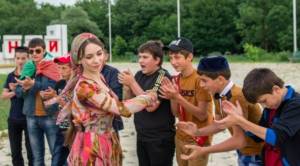
Chechen. Lezginka.
The national Chechen cuisine, rightfully considered one of the most ancient in the Caucasus, also deserves special attention. From time immemorial, the main products that Chechens used for cooking were: meat, cheese, cottage cheese, as well as pumpkin, wild garlic (wild garlic) and corn. Special importance is also attached to spices, which, as a rule, are used in huge quantities.
Housing
Chechens live in auls - villages. Due to the natural conditions of the area, the dwellings differ. Chechens living in the mountains have houses built of stone and are called sakli. Such sakli were also built from adobe; they can be erected in a week. Unfortunately, many had to do this when villages were often attacked by enemies. On the plains, mostly turluch houses were built, neat and bright inside. Wood, clay and straw were used for construction. The windows in the houses are without frames, but are equipped with shutters to protect against wind and cold. There is a canopy at the entrance that protects from heat and rain. The houses were heated by fireplaces. Each house has a kunatskaya, which consists of several rooms. The owner spends the whole day in them and returns to his family in the evening. The house has a yard surrounded by fence. A special oven is built in the yard in which bread is baked.
During construction, it was important to take into account safety and reliability, the ability to defend themselves if the enemy attacks. In addition, there had to be hayfields, water, arable land and pastures nearby. The Chechens took care of the land and even chose places on rocks to build houses.
The most common in mountain villages were one-story houses with flat roofs. The Chechens also built houses with 2 floors, towers with 3 or 5 floors. The residential building, tower and outbuildings together were called estates. Depending on the mountain topography, the development of estates was horizontal or vertical.

Chechens - history of the people, culture and customs
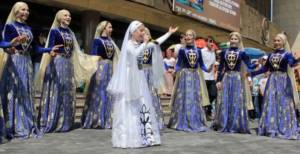
Chechens are the oldest people living in the North Caucasus.
The question of their origin still causes a lot of debate. According to the main version, it is believed that the name of the people was derived from the name of the village of Bolshoi Chechen.
The official name appears in written sources only
from the 18th century. After the Caucasian War,
a large number of Chechens moved
to live in the Ottoman Empire.
Today, the descendants of the settlers make up a large
Chechen diaspora in Turkey and Syria.
The official language is Chechen,
characterized by complex vocalism.
Arabic letters were used in Chechen writing until the beginning of the 20th century. In order to unify Soviet literature, by decree of the USSR government it was decided to switch to the Cyrillic alphabet. Unfortunately, the Cyrillic alphabet does not always cope with complex sounds, as a result of which the modern Chechen language is expressed in writing in 3 different alphabets: Russian, Latin and Arabic.
The main religion professed by the population is Islam
.
is of great importance .
This is a code of conduct that specifies the moral standards necessary for a person worthy of his people. According to the code, death in a just war or in defense of one's honor is preferable to life in dishonor and shame. It was here that the custom of blood feud originated. The conflict often escalated into tribal warfare and blood feud.
Chechens are tall and well built.
Eye color varies from dark brown to green. Hair is black or dark brown. Men are distinguished by physical strength, courage, and unbending fighting spirit. Most of the history of a people is connected with constant struggle and defense of their interests. Martial science developed from childhood - fathers taught their sons to wield weapons and ride horses. During the 1st World War, an elite regiment of only Chechens was created, called the Wild Division.
For the Chechen people, family ties are of great importance. Friendly neighborly relations are sacred - grief in someone else's family is the grief of the entire village. If a family has lost its wet nurse, the whole village supports them with things and food. Chechens are characterized by hospitality and responsiveness to everyone. They will definitely help a lost traveler, and guests are sacred to them. It is forbidden to show feelings in public here. In conversation, you must behave with restraint and show deep respect for the elderly. A woman is first and foremost a mistress and keeper of the hearth. When a woman enters a room, the men present are required to stand up.
Now Chechens have almost completely switched to urban clothing accepted in the modern world. The national costume is worn only on holidays.
From the national clothing, the men retained
the papakha headdress
and a high-collared shirt.
Under no circumstances should strangers touch the papakha - this is a strong insult to a man. In battle, the headdress was not removed, and a warrior who lost it lost his honor and dignity. In cooler times, a Circassian coat is worn. Gasyrniki were sewn on her on both sides of her chest. These are tiny pockets designed to store tubes with charges for weapons. Later they lost their purpose, but were preserved as a tribute to tradition. A mandatory element of the national costume is a dagger,
the wearing of which is allowed for boys
from 14 years of age.
Women wear colorful dresses embroidered with all kinds of patterns with long and wide sleeves. Local women
They are distinguished by great restraint in their clothing and
do not wear open necklines and short dresses that
strongly emphasize their figure. For a Chechen girl, it is forbidden to go out into society with her head uncovered. An important element of the wardrobe for both men and women is the belt. Women's belts are richly decorated with precious stones.
Chechens live in auls - villages.
The most common dwellings are
one-story houses with flat roofs.
A special oven for baking bread is usually built in the yard.
Chechen cuisine is considered one of the most ancient in the Caucasus. Particular importance is attached to spices, which are used in huge quantities. The main products are lamb and poultry, cheese and herbs.
Chechens love music very much and dance the main
national dance Lezginka very well.
Appearance
In anthropology, Chechens are a mixed type. Eye color can range from black to dark brown and from blue to light green. Hair color - from black to dark brown. The nose of Chechens is often concave and upturned. Chechens are tall and well-built, the women are very beautiful.
Everyday clothing of a Chechen man consists of the following elements:
- checkmen, sewn from gray or dark fabric;
- arkhaluks, or beshmets, of various colors, were worn in white in the summer;
- narrowed trousers;
- cloth leggings and chiriki (shoes without soles).
Elegant dresses are trimmed with braiding, and special attention is paid to the decoration of weapons. In bad weather they wore a bashlyk or burka, which Chechen women sewed very skillfully. Shoes were mainly made from rawhide. Many wore Caucasian soft boots. The rich wore boots and leggings made of black morocco, to which soles of buffalo leather were sometimes sewn.
The main headdress of a Chechen is a cone-shaped papakha, which ordinary people made from sheepskin, and the rich made from the skins of Bukhara lamb. In the summer they wore a felt hat.
Bone gaztris were sewn onto men's suits as decoration, and a belt with silver plaques was worn. The image was completed with a dagger made by local craftsmen.
Women wore:
- long shirts to the knees, blue or red;
- wide trousers that were tied at the ankles;
- On top of the shirt they put on a long dress with wide and long sleeves;
- young women and girls wore dresses gathered at the waist with a belt made of fabric. Elderly women's dresses are wide and without pleats or belts;
- the head was covered with a scarf made of silk or wool. Elderly women wore bandages under a scarf that tightly fit their heads and went down their backs in the form of a bag. Braided hair was placed in it. Such a headdress was also very common in Dagestan;
- Women wore dudes as shoes. Rich families wore galoshes, shoes and shoes made locally or in the city.
Women's clothing from a wealthy family was distinguished by sophistication and luxury. It was sewn from expensive fabrics and trimmed with silver or gold braid. Rich women loved to wear jewelry: silver belts, bracelets and earrings.

In winter, Chechens wore a wool-lined beshmet with metal or silver clasps. The sleeves of clothing below the elbow were split and fastened with buttons made of simple or silver threads. Beshmet was sometimes worn in the summer.
During Soviet times, Chechens switched to urban clothing, but many men retained the traditional headdress, which they rarely parted with. Today, many men and old people wear a hat, Circassian coats and beshmets. In Chechnya, men wear Caucasian shirts with a stand-up collar.
Women's national costume has survived to this day much more. And now older women wear chokhta, dresses with trousers and homemade dudes. Young women and girls prefer urban-cut dresses, but they are made with long sleeves and a closed collar. Scarves and shoes today are worn in urban areas.
Chechen wedding: preparation for the ceremony
How does a Chechen wedding go? The wedding ceremony itself is full of all sorts of rituals and ceremonial gestures.
Very interesting Caucasian brides prepare for their wedding:
Photo: fotkay.ru: UGC
- In the morning, the girl undergoes a ritual bathing ceremony. Her bathroom is fumigated with incense and infusions of medicinal herbs are added to the bath.
- After ablution, ritual lines are drawn on her clean skin on the back and arms.
- The bride performs the “chokhi” ritual - the traditional putting on of a wedding dress.
Character
Chechens are cheerful, impressionable and witty people, but at the same time they are distinguished by severity, treachery and suspicion. These character traits were probably developed among the people during centuries of struggle. Even the enemies of the Chechens have long recognized that this nation is brave, indomitable, dexterous, resilient and calm in the fight.
The ethical code of honor of Konahalla is important for Chechens, which is a universal code of conduct for any man, regardless of his religion. This code reflects all the moral standards that a believer and a worthy son of his people possesses. This code is ancient and existed among the Chechens back in the Alan era.
Chechens never raise a hand against their children because they do not want them to grow up to be cowards. These people are very attached to their homeland, to which various touching songs and poems are dedicated.
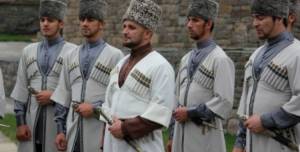
Caucasian War
In the winter of 1781, Chechnya officially became part of Russia. The corresponding document was signed by many respectable elders of the largest Chechen villages, who not only put their signature on paper, but also swore on the Koran that they accepted Russian citizenship.
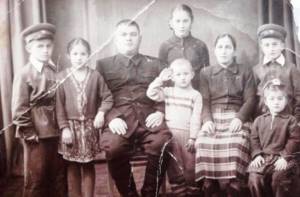
But at the same time, the majority of the nation’s representatives considered this document a mere formality and, in fact, intended to continue their autonomous existence. One of the most ardent opponents of Chechnya's entry into Russia was Sheikh Mansur, who had enormous influence on his fellow tribesmen, since he was not only a preacher of Islam, but was also the first imam of the North Caucasus. Many Chechens supported Mansur, which later helped him become the leader of the liberation movement and unite all the dissatisfied mountaineers into one force.
Thus began the Caucasian War, which lasted nearly fifty years. Ultimately, Russian military forces managed to suppress the resistance of the mountaineers, although extremely tough measures were taken to achieve this, including burning hostile villages. Also during that period, the Sunzhinskaya (named after the Sunzha River) line of fortifications was built.
However, the end of the war was very conditional. The established peace was extremely shaky. The situation was complicated by the fact that oil deposits were discovered on the territory of Chechnya, from which the Chechens received practically no income. Another difficulty was the local mentality, which was very different from the Russian one.
The Chechens then repeatedly staged various uprisings. But despite all the difficulties, Russia greatly valued the representatives of this nationality. The fact is that men of Chechen nationality were wonderful warriors and were distinguished not only by physical strength, but also by courage, as well as an unbending fighting spirit. During the First World War, an elite regiment was created, consisting only of Chechens and called the “Wild Division”.
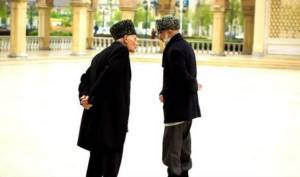
The Chechens have indeed always been considered wonderful warriors, in whom composure is amazingly combined with courage and the will to win. The physical characteristics of representatives of this nationality are also impeccable. Chechen men are characterized by: strength, endurance, agility, etc.
On the one hand, this is explained by the fact that they lived in rather harsh conditions, where it was extremely difficult for a physically weak person to exist, and on the other hand, by the fact that almost the entire history of this people is associated with constant struggle and the need to defend their interests with arms in hand. After all, if we look at the events that took place in the Caucasus, both in ancient and modern times, we will see that the Chechen people always remained quite autonomous and, in case of dissatisfaction with certain circumstances, easily went into a state of war.
At the same time, the military science of the Chechens has always been very developed and fathers from early childhood taught their sons to wield weapons and ride horses. The ancient Chechens managed to do the almost impossible and create their own invincible mountain cavalry. They are also considered the founders of such military techniques as roaming batteries, the technique of blocking the enemy, or the deployment of “crawling” troops into battle. From time immemorial, the basis of their military tactics was surprise, followed by a massive attack on the enemy. Moreover, many experts agree that it was the Chechens, and not the Cossacks, who were the founders of the partisan method of warfare.
Traditions
Chechens have always been distinguished by their hospitality. Even in ancient times, they always helped travelers, giving them food and shelter. This is customary in every family. If a guest liked something in the house, the owners should give it to him. When there are guests, the owner takes a place closer to the door, thereby showing that the guest is the most important in the house. The owner must remain at the table until the last guest. It is indecent to interrupt a meal first. If a relative, even a distant one, or a neighbor comes into the house, younger family members and young men should serve him. Women should not show themselves to guests.
Many people think that women's rights are violated in Chechnya, but in fact this is far from the case. A woman who was able to raise a worthy son, along with other family members, has the right to vote during decision-making. When a woman enters the room, the men present must stand up. When a woman comes to visit, special ceremonies and customs are also held in her honor.
When a man and a woman walk side by side, she must lag behind one step, the man must take on the danger first. The young wife must first feed his parents and then himself. If there is even the most distant relationship between a girl and a guy, marriage between them is prohibited, but this is not a gross violation of traditions.
The father is always considered the head of the family, the woman looks after the household. The husband and wife do not call each other by name, but say “my wife” and “my husband”, “the one in the house”, “the mother of my children”, “the owner of this house”.
It is humiliating and insulting for a man to interfere in women's affairs. When a son brings a daughter-in-law into the house, she bears the main responsibilities of the household. She has to get up earlier than everyone else, do the cleaning and go to bed later than everyone else. Previously, if a woman did not want to follow the family rules, she could be punished or kicked out.

The daughters-in-law are raised by the husband's mother, who is called nana. A young wife should not speak freely with her mother-in-law, nor should she appear in front of her with her head uncovered and in an unkempt appearance. Nana can shift some of her responsibilities to her eldest daughter-in-law. In addition to housekeeping, the husband's mother must observe all traditions and family rituals. The eldest woman in the family was always considered the keeper of the hearth.
It is considered very uncultured to interrupt an elder and start a conversation without his request or permission. Younger people should always let the older ones pass and greet him politely and respectfully. It is a great insult for a man if someone touches his hat. This is tantamount to a public slap in the face. If children get into a fight, the first thing parents do is scold their child and only then begin to figure out who is wrong and who is right. If a son starts smoking, the father, through the mother, must instill in him that this is very harmful and unacceptable, and he himself must give up this habit.
This people has a custom of avoidance that prohibits showing feelings in public. It applies to all family members. Everyone should behave with restraint in public. The Chechens still preserve the cult of fire and hearth, the tradition of oaths and curses by fire.
Many rites and rituals are associated with weapons and war. It was considered a shame and cowardice to draw a sword from its sheath in front of an enemy or offender and not use it. At 63, a man reached the age of untying his belt and could go out without a weapon. To this day, the Chechens have preserved such a custom as blood feud.
A Chechen wedding consists of many rituals and traditions. The groom was forbidden to see the bride before the wedding and for some time after the celebration. A wedding dress is at the same time a festive outfit for girls and young women. It is sewn from bright or white silk; there is a continuous slit in the front of the dress. A decoration in the form of silver buttons made in Kubachi is sewn on both sides of the chest area. The dress is complemented by a silver belt of the Caucasian type. A white scarf is put on the head, which completely covers the bride's head and hair. Sometimes a veil is worn over the scarf.

New in blogs
Nokhchalla is a word that is difficult to translate. “Nokhcho” means “Chechen”. The concept of “nokhchalla” is all the features of the Chechen character in one word. This includes the entire spectrum of Chechen life norms; this is a kind of code of honor.
The origins of the Chechen code of honor lie in the ancient history of the people. In ancient times, in the harsh conditions of the mountains, a guest who was not accepted into the house could freeze, become a victim of robbers or a wild animal. The law of the ancestors - to invite a guest into the house, warm, feed and offer overnight accommodation - is strictly observed. Hospitality is nokhchalla. The roads in the mountains of Chechnya are narrow and often snake along cliffs. If you quarrel, you can fall into the abyss. To be compliant is nokhchallah. The difficult conditions of mountain life made mutual assistance and mutual assistance, which are part of the Nokhchalla, necessary. Nokhchalla is the ability to build relationships with people without in any way demonstrating one’s superiority, even when in a privileged position. On the contrary, in such a situation you should be especially polite and friendly so as not to hurt anyone’s pride. So, a person riding a horse should be the first to greet someone on foot. If the pedestrian is older than the rider, the rider must dismount.
Nokhchalla is friendship for life, in days of sorrow and in days of joy. Friendship for a mountaineer is a sacred concept. Inattention or discourtesy towards a brother will be forgiven, but towards a friend - never! Nokhchalla is a special veneration for women. Emphasizing respect for his relatives, the man dismounts his horse right at the entrance to the village where they live. Here is a parable about a mountain man who once asked to spend the night in a house on the outskirts of a village, not knowing that the owner was alone at home. She could not refuse the guest, she fed him and put him to bed. The next morning the guest realized that there was no owner in the house, and the woman had been sitting all night in the hallway by a lit lantern. While washing his face in a hurry, he accidentally touched his mistress’s hand with his little finger. Leaving the house, the guest cut off this finger with a dagger. Only a man brought up in the spirit of Nokhchalla can protect a woman’s honor in this way. Nokhchalla is the rejection of any coercion. Since ancient times, a Chechen, from his boyhood years, was raised as a protector, a warrior. The most ancient type of Chechen greeting, preserved to this day, is “Come free!” An inner feeling of freedom, a willingness to defend it - this is nokhchalla.
At the same time, nokhchalla obliges the Chechen to show respect to any person. Moreover, the further a person is by kinship, faith or origin, the greater the respect. People say: the offense you inflicted on a Muslim can be forgiven, for a meeting on the Day of Judgment is possible. An offense caused to a person of a different faith is not forgiven, for such a meeting will never happen. Nochhalla is something that a Chechen follows voluntarily. This concept contains the formula of what a real Chechen should be.
Modern customs and traditions, Men's etiquette The basic norms of behavior of a Chechen man are reflected in the concept of “nokhchalla” - see section 1. But for certain everyday situations there are also traditions and customs that have developed over centuries. They are reflected in Chechen proverbs and sayings about how an owner, husband, father should behave: Laconicity - “I don’t know, no - one word; I know, I saw it - a thousand words.” Slowness - “The fast river did not reach the sea.” Caution in statements and in assessing people - “A wound from a sword will heal, a wound from a tongue will not.” Temperance - “Intemperance is stupidity, patience is good manners.” Restraint is the main characteristic of a Chechen man in almost everything related to his household chores. According to custom, a man will not even smile at his wife in front of strangers, and will not take the child in his arms in front of strangers. He speaks very sparingly about the merits of his wife and children. At the same time, he must strictly ensure that no man’s affairs and responsibilities fall on his wife - “The hen, which began to crow like a rooster, burst.”
A Chechen reacts to obscene language as if it were a particularly serious insult, especially if the curse involves a woman. This is due to the fact that the biggest shame is if a woman from the family allows herself any relationship with a stranger. In the republic, although rare, there were cases of lynching of women for free behavior. The concept of male beauty for Chechens includes tall stature, broad shoulders and chest, thin waist, thinness, and fast gait. “You can tell what he’s like by his gait,” people say. The mustache carries a special, symbolic meaning - “If you don’t behave like a man, don’t wear a mustache!” For those who wear a mustache, this strict formula is accompanied by three prohibitions: do not cry from grief, do not laugh from joy, do not run away under any threat. This is how a mustache regulates the behavior of a Chechen man! One more thing. They say that the leader of the rebel highlanders, Shamil, who was going to surrender, was called out several times by his faithful associate. But Shamil did not turn around. When he was later asked why he did not turn around, he replied that he would have been shot. “Chechens don’t shoot in the back,” Shamil explained.
Special numbers - 7 and 8
One of the Chechen fairy tales talks about the young man Sultan, who courted a girl for exactly 8 years. According to Chechen customs, an infant should not be shown a mirror until he is eight months old. In the Vainakh version of the myth of Adam and Eve, the first man and woman went in different directions to find a mate; Eve said that on her way she crossed eight mountain ranges. Chechen tradition presupposes that a woman knows eight generations of her maternal and paternal ancestors. A man must know the seven ancestors.
These examples show that Chechens associate the number 8 with a woman, and the number 7 with a man. Seven essentially consists of ones. The number eight, consisting of four twos (otherwise, pairs), reflects motherhood, the principle of generating one’s own kind. Thus, digital symbolism shows the special, predominant place of women in society compared to men, which comes from ancient times. This is also emphasized by the famous Chechen proverb: “If a man spoils, the family spoils, if a woman spoils, the whole nation spoils.” Chechens attach special importance to inheritance through the female line. Thus, the expression “mother’s tongue” is used when a person’s worthy behavior is noted, and the expression “mother’s milk” is used when one is condemned for an unseemly act. Mutual assistance, mutual assistance
When meeting, every Chechen will first ask: “How is it at home? Is everyone alive and well? When breaking up, it is considered good manners to ask: “Do you need my help?” The custom of mutual labor assistance goes back to ancient times. In those days, harsh living conditions forced the mountaineers to unite for agricultural work. The peasants tied themselves together with one rope to mow grass on the steep mountainside; the entire village reclaimed areas for crops from the mountains. In any misfortune, especially if the family lost its breadwinner, the village took upon itself the care of the victims. Men did not sit down to the table until part of the food was taken to a house where there was no male breadwinner. A greeting from a young person to an older person necessarily includes an offer of help. In Chechen villages it is customary, if an elderly person begins some kind of housework, to take part in it as a neighbor. And often it is the volunteer helpers who start the work.
The tradition of mutual support has developed among the people responsiveness to the misfortune of others. If there is grief in the house, then all the neighbors open the gates wide, thereby showing that the neighbor’s grief is his grief. If someone dies in the village, all fellow villagers will come to this house to express condolences, provide moral support, and, if necessary, financial assistance. Funeral arrangements for Chechens are entirely taken care of by relatives and fellow villagers. A person who has been absent from the village for some time, upon arrival, receives full information about the events that happened without him, including misfortunes. And the first thing he does upon arrival is express condolences. “A neighbor nearby is better than relatives far away,” “Rather than live without human love, it is better to die,” “The unity of the people is an indestructible fortress,” says Chechen wisdom.
Hospitality
According to legend, the ancestor of the Chechens, Nokhchuo, was born with a piece of iron - a symbol of military valor - in one hand and with a piece of cheese - a symbol of hospitality - in the other. “Where a guest does not come, grace does not come”, “A guest in the house is a joy”... Many sayings, legends, and parables are dedicated to the sacred duty of hospitality among the Chechens. Hospitality is especially evident in rural life. To receive guests, each house has a “guest room”; it is always ready - clean, with fresh linen. No one uses it, even children are prohibited from playing or studying in this room. The owner must always be ready to feed the guest, so at any time in the Chechen family food was specially set aside for this occasion. For the first three days, you are not supposed to ask the guest anything. The guest lives in the house as an honorary member of the family. In the old days, as a sign of special respect, the daughter or daughter-in-law of the owner helped the guest take off his shoes and outerwear. The hosts provide a warm and generous welcome to the guest at the table. One of the basic rules of Chechen hospitality is to protect the life, honor and property of the guest, even if this involves a risk to life. The guest should not offer a fee for the reception, but he may give gifts to the children. Chechens have always followed the custom of hospitality. And they showed it to any kind person, regardless of his nationality.
In the family circle, Attitude towards elders.
The unshakable rule of every Chechen family is respect and care for the older generation, especially parents. The parents live with one of their sons. In the morning, the good daughter-in-law begins her housework in half of the old people. Only after that does she start other things. Sons, returning home in the evening, first of all go to their parents to talk with them, share their joys and worries. Not only the son, daughter, but also all family members take care of the elderly. Grandfather is called “big father”, and grandmother is most often called “mother”. Children may not fulfill the request of their father or mother - they will be forgiven for this. But it is unacceptable to disobey your grandfather, grandmother, other older relatives or neighbors. Not standing up when old people appear or sitting down without their persistent invitation means demonstrating poor upbringing. Tradition does not allow drinking alcohol in the presence of any older relatives. You cannot speak to elders in a raised tone or behave cheekily. If the parents do not live with one of the sons, then the children are especially attentive to them: for example, the best products are constantly sent to the parents’ house. In rural areas, as a rule, a separate house is placed in the yard for the elderly. This is a long-standing custom. There, the elders in the family are provided with the most comfortable living conditions that meet their needs and age. Family responsibilities. Chechen families have many children. Several brothers often live with their families in the same yard or in the same village. The rules of kinship relationships have evolved over the centuries. Here's what they are in general terms. In a family, any conflict situation is resolved by the eldest man or woman in the yard. The mother of children, if they were offended, should never complain to her husband. As a last resort, she can turn to her husband's relative. As a rule, it is customary not to pay attention to children's grievances and quarrels. Chechen children know that their uncle will readily respond to any of their requests and help. He can refuse his child, but without very serious reasons he will never leave the request of the children of his brothers and sisters unanswered. The older generation is responsible for strengthening family ties. Parents must maintain an atmosphere of harmony in their sons' families. Special correctness is required in relation to the daughter-in-law. The father-in-law is obliged to be sensitive towards the wives of his sons: in their presence one cannot drink alcohol, swear, or violate the dress code accepted in the Chechen family.
Family honor.
It is customary among Chechens to attribute a person’s merits and demerits to his entire family. An unseemly act will cause many relatives to “blacken their faces” and “hang their heads.” They usually say about decent behavior: “One could not expect anything else from the people of this family.” Chechens instill in their children the quality of “yakh”, which has the meaning of healthy competition - in the sense of “being the best.”
Adat in modern Chechnya
Adat (from Arabic "custom") - the usual (unwritten) laws of Muslims. Adat norms developed during tribal relations. Adat regulated the life of the community, marriage and family relations. Said-Magomed Khasiev in an article published in the newspaper for the Chechen diaspora “Daimekhkan az” (“Voice of the Fatherland”). CM. Khasiev writes: “There are adats that elevate a person’s dignity, helping him become better. They are opposed by adats, which the Chechens call mountain-pagan (lamkersts). They are not followed by the majority of society. Here is an example related to a folk legend. Once the abrek Zelimkhan met a woman overcome with grief on a mountain road. He asked what happened. “They took my baby away,” the woman replied. Zelimkhan set out to search and soon saw two men carrying a child. Abrek asked for a long time to return the child to his mother, conjured by God and his ancestors, but to no avail. When he started making threats, the men hacked the baby to death with daggers. Zelimkhan killed them for it. According to Chechen adats, you cannot raise your hand not only against a baby, but also against a minor teenager, a woman, or an old man. They are not part of the circle of revenge. However, those who follow the mountain-pagan adats can even kill a woman in the name of revenge.
Attitude towards a woman
Among the Chechens, a woman who is a mother has a special social status. The man is only the master of the house, and since ancient times she has been the mistress of the fire, and the most terrible Chechen curse is “so that the flame in your hearth goes out.”
Only a woman can stop a fight between men based on blood feud. If a woman appears where the blood is flowing, the mortal fight can end. A woman can stop hostility by removing a scarf from her head and throwing it between the combatants. As soon as a blood enemy touches the hem of any woman, the weapon aimed at him will be sheathed: now he is under her protection. By touching a woman's breast with his lips, anyone automatically becomes her son. To stop the quarrel, the woman let her children take the mirror out to those who were chopping - this acted as a ban on civil strife. According to tradition, a man, protecting a woman, always goes ahead of her. This custom has ancient roots: in the old days, on a narrow mountain path there could be very dangerous encounters - with a robber, a wild animal: A man walked ahead of his woman, and was ready to protect her at any moment. Chechens greet women only standing. If an elderly woman passes by, it is the duty of any person to stand up and say hello first. Disrespect for the mother and her relatives is considered a shame. For a son-in-law, honoring his wife's relatives is considered a virtue, for which God can send him to heaven without trial. Wedding ceremony The Chechen wedding ceremony is a series of performances that include singing, dancing and music. When fellow villagers, relatives, and friends go to pick up the bride and bring her to the groom’s house, music sounds. There are other performances that take place at this stage of the wedding. For example, the bride's relatives delay the wedding train by blocking the path with a cloak or a rope stretched across the street - you have to pay a ransom to get through.
Other pantomimes take place in the groom's house. A felt carpet and a broom are placed in advance on the threshold of the house. When entering, the bride can step over them or move them out of the way. If she cleans it up, it means she’s smart; if he steps over, it means the guy is out of luck. But the bride is seated in a corner of honor by the window under a special wedding curtain, and she is given a child in her arms—someone’s first-born son. This is a wish for her to have sons. The bride caresses the child and gives him something as a gift. Guests come to the wedding with gifts. Women give pieces of cloth, rugs, and sweets. Men - money or sheep. Men always give the gift themselves. Then the magnificent feast begins: After the refreshments, there’s another performance. The bride is brought out to the guests, from whom they ask for water. Everyone says something, jokes, discusses the girl’s appearance, her task is not to start talking in response, because verbosity is a sign of immodesty. The bride can only offer the guests a drink of water and wish everyone good health.
On the third day another performance is organized. The bride is led to the water with music and dancing. The attendants throw cakes into the water, then shoot them, after which the bride, having collected water, returns home. This is an ancient ritual that is supposed to protect a young woman from the merman. After all, she will walk on water every day, and the merman has already been lured with a treat and “killed.” This evening the marriage is registered. It involves a trusted father of the bride and the groom. The mullah, on behalf of the father, gives consent to his daughter’s marriage, and the next day the bride becomes the young mistress of the house. According to Chechen custom, the groom should not appear at his own wedding. He does not participate in wedding games, but has fun at this time in the company of friends.
Culture
Chechen folklore is diverse and includes genres that are characteristic of the oral folk art of many peoples:
- everyday tales, fairy tales, about animals;
- mythology;
- heroic epic;
- lyrical songs, labor songs, ritual songs, heroic-epic songs, lullabies;
- legends;
- puzzles;
- sayings and proverbs;
- children's folklore (riddles, tongue twisters, counting rhymes, songs);
- religious folklore (stories, songs, nazms, hadiths);
- creativity of tulliks and zhukhurgs;

Chechen mythology, the names of deities who personified natural elements, have been preserved in rather fragmentary ways. The musical folklore of the Chechens is bright and original; they amazingly dance the national Chechen dance Nokhchi and Lezginka (Lovzar). Music is of great importance to this people. With its help, they express hatred, look to the future and remember the past. Many of the national musical instruments are still common today:
- dechig-pondar
- adhyokhu-pondar
- zurna
- pipe shiedag
- bagpipes
- drum vota
- tambourine
- heme
The instruments were used for ensemble and solo performance. During the holidays, people play different instruments together.
Culture and life of the Chechen people
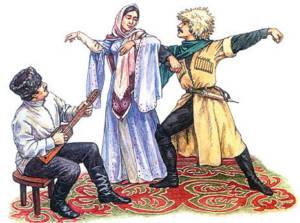
Since the 3rd century, the Caucasus has been a place where the paths of civilizations of farmers and nomads crossed, and the cultures of different ancient civilizations of Europe, Asia and the Mediterranean came into contact. This was reflected in mythology, oral folk art and culture.
Unfortunately, the recording of the Chechen folk epic began quite late. This is due to the armed conflicts that shook this country. As a result, huge layers of folk art - pagan mythology, Nart epic - were irretrievably lost. The creative energy of the people was absorbed by the war.
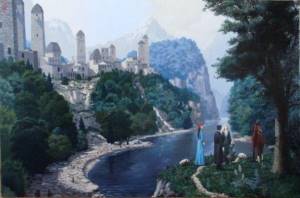
The policy pursued by the leader of the Caucasian highlanders, Imam Shamil, made a sad contribution. He saw democratic, popular culture as a threat to his rule. During his more than 25 years in power in Chechnya, the following were banned: folk music and dances, art, mythology, observance of national rituals and traditions. Only religious chants were allowed. All this had a negative impact on the creativity and culture of the people. But Chechen identity cannot be killed.
Famous personalities
Among the Chechen people there are many outstanding personalities in politics, sports, creativity, science and journalism:

Buvaysar Saitiev, 3-time Olympic champion in freestyle wrestling
- Movsar Mintsaev, opera singer;
- Makhmud Esambaev, People's Artist of the USSR, master of dance;
- Umar Beksultanov, composer;
- Abuzar Aydamirov, poet and writer, classic of Chechen literature;
- Abdul-Khamid Khamidov, playwright, brilliant talent of Chechen literature;
- Katy Chokaev, linguist, professor, Doctor of Philology;
- Raisa Akhmatova, national poetess;
- Sherip Inal, screenwriter and film director;
- Kharcho Shukri, calligraphy artist;
- Salman Yandarov, surgeon, orthopedist, candidate of medical sciences;
- Buvaysar Saitiev, 3-time Olympic champion in freestyle wrestling;
- Salman Khasimikov, 4-time freestyle wrestling champion;
- Zaurbek Baysangurov, boxer, twice European champion, world champion in first and welterweight;
- Lechi Kurbanov, European champion in Kyokushinkai karate.
